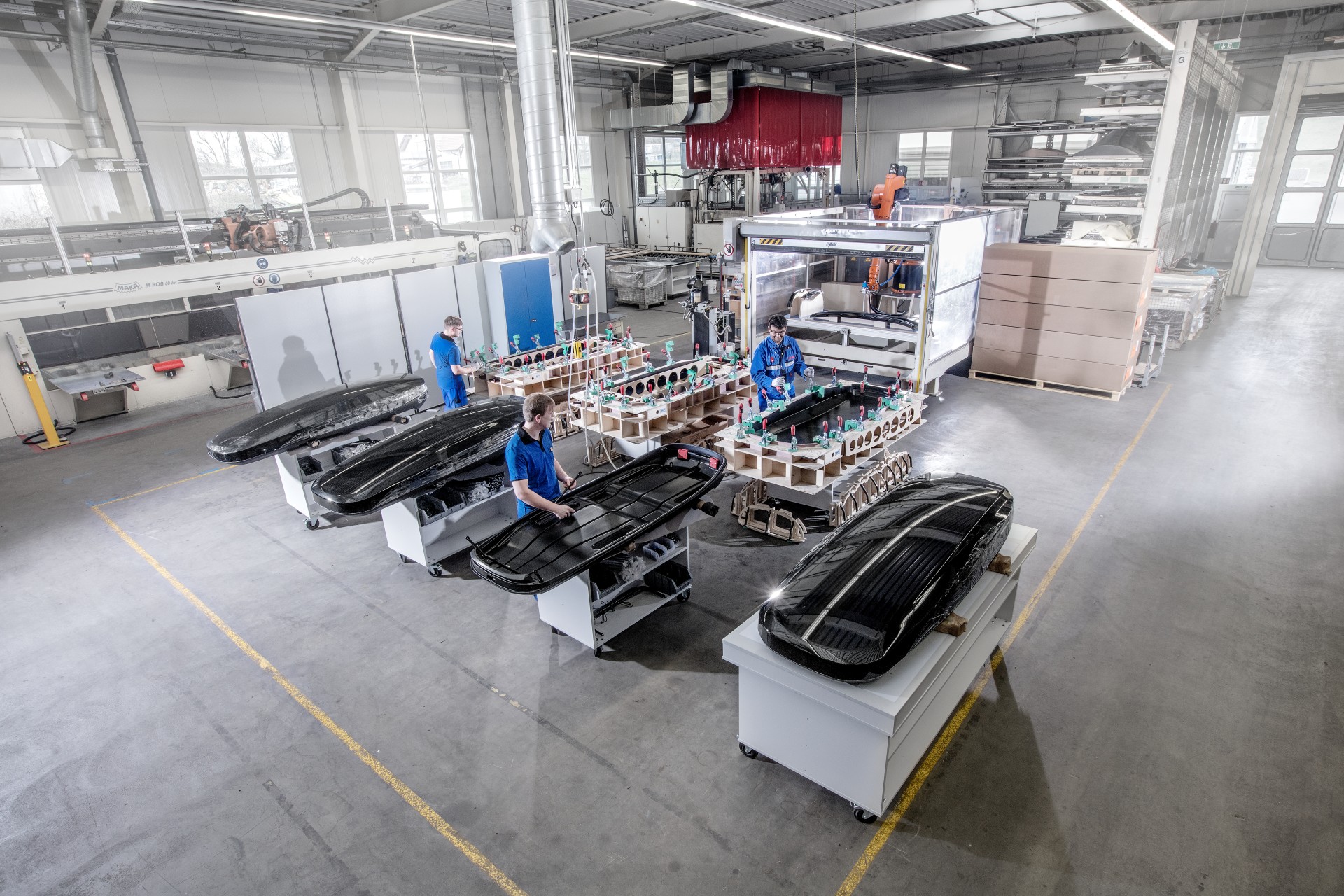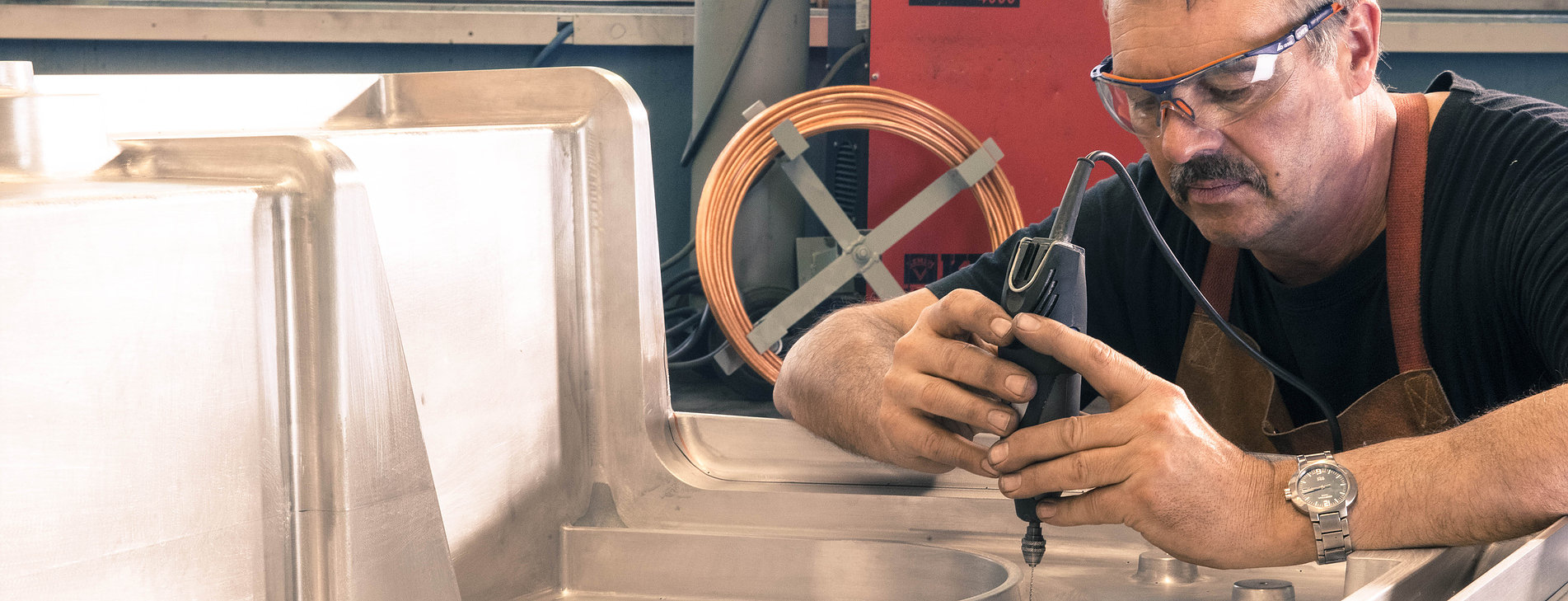FAQ
About swissplast
.
| Question | reply |
|---|---|
| Which machines are used? | At swissplast, state-of-the-art vacuum thermoforming machines are used for deep drawing. So-called plate forming machines are used for material thicknesses over 2 mm. For thicknesses less than 2 mm, ultra-modern compressed air forming machines are used. |
| What does deep drawing mean? | The term deep drawing describes a process in plastics processing. In thermoforming, a basic distinction is made between the negative and the positive process. In negative forming, the heated semi-finished product is sucked or printed into the concave mould cavity, in positive forming it is sucked onto a convex model ( positive mould core ). The side which is in contact with the tool becomes smoother and more accurate. |
| What are the advantages of deep drawing over other processes? | In comparison to the traditional injection moulding process, deep-drawing is the much more economical option, especially for small to medium quantities, since tool costs are much lower compared to the injection moulding process. In addition, samples, prototypes or small series can be developed very quickly if required. |
| What min./max. mass can the finished products have? | This depends on the plastics used and the area of the available vacuum thermoforming machines. The swissplast group processes plastics with an initial thickness of 0.3 mm to 14 mm. The moulding dimensions (L x W) can be up to 2,950 x 1,450 mm. |
| Up to which size can products be produced by deep-drawing? | The largest forming area at swissplast is 2,950 x 1,450 mm, the maximum drawing height/depth positive and negative is 900 mm. |
| How precise is the deep drawing process? | Through the use of CNC milled and cooled aluminium tools, even high-quality plastics, moulded parts can be produced with injection moulding quality. |
| What starting materials are used? | All classic thermoplastics can be deep-drawn. These can be the typical polyolefins such as PE; PP; styrene; copolymers i.e. PS, ABS, SAN, ASA as well as technical thermoplastics such as PC, PMMA, PET, PVDF etc. |
| What finishing options can be offered? | Dependent on the batch size and the number of pieces, moulded parts are partly precision milled on ultra-modern CNC machining centres. This is followed by subsequent treatments such as:
In principle, it is possible, for example, to coat products made of PS or ABS subsequently, and the products can also be printed using various printing processes. (screen printing, pad printing etc.). |
| What special competence does the swissplast group offer? | As one of the few thermoformers, swissplast group offers complete development, design, prototypes and series production from a single source. In addition, we are able to test and inspect products under special conditions (continuous load, temperature exposure, UV radiation, etc.). |
| Can transparent products be manufactured with deep drawing? | In principle it is possible to process all transparent or translucent plastics. This is followed by after-treatments such as:
|
| Is there an own prototype development? | swissplast has its own prototyping department where prototypes are produced for customers. Furthermore, in cooperation with designers, we can also make suggestions to our customers regarding the design and appearance of their products and implement them very quickly. |
| How can you offer your customers a high quality standard? | Companies of the swissplast group are all certified according to ISO 9001. For us, quality begins with the acceptance of the order at all administrative and production levels within the company. Through permanent training and further education measures, we ensure a high standard of training for our employees who directly participate in the implementation of agreed quality goals and standards. |
| What is DIN ISO 9001 ? | UDIN ISO 9001 describes a quality management system that covers all areas and levels of a company. In addition to the classic areas of production and administration, developments are also affected. swissplast conducts permanent internal and external audits to prove that the requirements of DIN ISO 9001 are met. |
At swissplast, state-of-the-art vacuum thermoforming machines are used for deep drawing. So-called plate forming machines are used for material thicknesses over 2 mm. For thicknesses less than 2 mm, state-of-the-art automatic compressed air forming machines are used.
The term deep drawing describes a process in plastics processing. In thermoforming, a basic distinction is made between the negative and the positive process. In negative forming, the heated semi-finished product is sucked or printed into the concave mould cavity, in positive forming it is sucked onto a convex model ( positive mould core ). The side which is in contact with the tool becomes smoother and more accurate.
Compared to the traditional injection moulding process, deep-drawing is the much more economical option, especially for small to medium quantities, since tool costs are much lower compared to the injection moulding process. In addition, samples, prototypes or even small series can be developed very quickly if required.
his depends on the plastics used and the area of the available vacuum thermoforming machines. The swissplast group processes plastics with an initial thickness of 0.3 mm to 14 mm. The moulding dimensions (L x W) can be up to 2,950 x 1,450 mm.
The largest forming area at swissplast is 2,950 x 1,450 mm, the maximum drawing height/depth positive and negative is 900 mm.
By the use of CNC milled and cooled aluminium tools, also high-quality plastics can be produced shaped parts the injection moulding quality exhibit.
All classic thermoplastics can be deep-drawn. These can be the typical polyolefins such as PE; PP; styrene; copolymers i.e. PS, ABS, SAN, ASA but also technical thermoplastics such as PC, PMMA, PET, PVDF, etc.
Depending on the batch size and the number of pieces, moulded parts are partly milled to exact dimensions on ultra-modern CNC machining centres. This is followed by subsequent treatments such as:
- Glue
- Join
- Welding
- Drilling
- Metallizing
In principle, it is possible, for example, to coat products made of PS or ABS subsequently, and the products can also be printed using various printing processes. (screen printing, pad printing etc.).
As one of the few thermoformers, swissplast group offers complete development, design, prototypes and series production from a single source. In addition, we are able to test and inspect products under special conditions (continuous load, temperature effects, UV radiation, etc.).
Basically it is possible to process all transparent or translucent plastics. This is followed by after-treatments such as:
- PVC
- Styrolux®
- PMMA
- PET
- polycarbonate
?
swissplast has its own prototyping department where prototypes are produced for customers. In addition, in collaboration with designers, we can also make suggestions to our customers regarding the design and appearance of their products and implement them very quickly.
Companies of the swissplast group are all certified according to ISO 9001. For us, quality begins with the acceptance of the order at all administrative and production levels within the company. Through permanent training and further education measures we ensure a high training standard of our employees who directly participate in the implementation of agreed quality goals and standards.
UDIN ISO 9001 describes a quality management system that covers all areas and levels of a company. In addition to the classic areas of production and administration, developments are also affected. swissplast conducts permanent internal and external audits to prove that the requirements of DIN ISO 9001 are met.
Additional technologies





